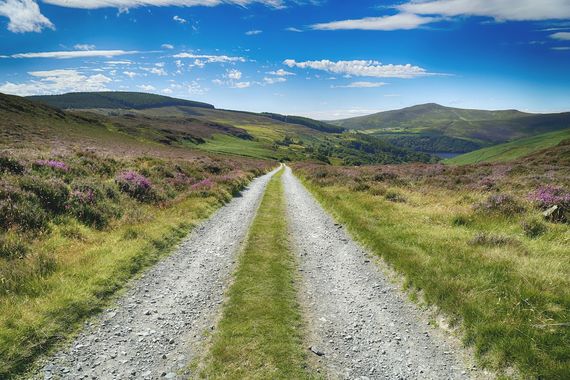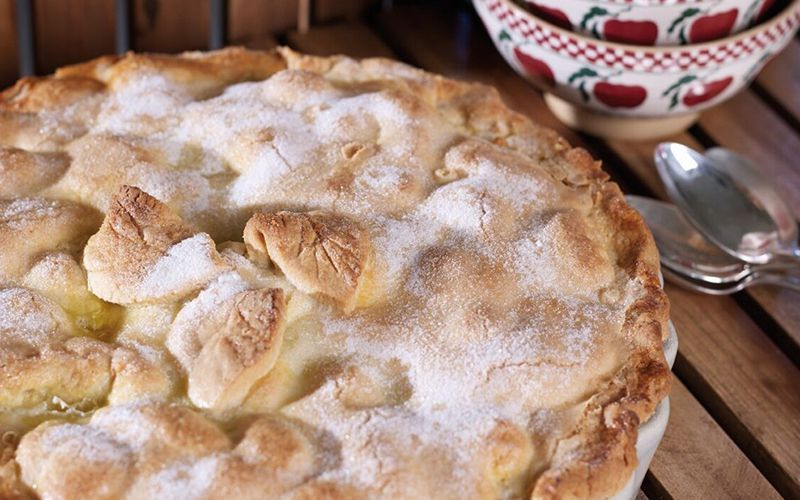Though Ireland may not be synonymous with bold spices, its native herbs and plants offer a subtle and rich flavor palette that has been woven into the country’s culinary traditions. So, why not take a stroll in the Irish countryside or by the sea, and discover the wild flavors that have been part of Irish cuisine for generations?
Ireland is renowned for its lush green landscapes, rolling hills, and temperate climate. While not traditionally known as a spice hub like India or the Mediterranean, Ireland has its own rich history of herbs and wild plants that have flavored traditional Irish dishes for centuries.
Native Irish herbs and plants
Wild Garlic (Ramsons)
Found in woodlands and along riverbanks, wild garlic (known as Ramsons) has been used in Irish cooking for centuries. Its distinctively pungent flavor adds a garlicky aroma to dishes, and it’s popular in pesto, soups, and sauces.
Nettle
While many think of nettles as a pesky plant, they have a long history as a nutritious and flavorful addition to Irish cuisine. High in vitamins and minerals, nettle leaves are used in teas, soups, and even as a substitute for spinach.
Sorrel Sorrel, a tangy herb with a lemony taste, grows naturally in Ireland and has been used in soups, sauces, and salads. Its sharp, citrusy flavor adds brightness to rich, hearty dishes.
Dillisk (Dulse)

Irish Seaweed Kitchen, Stredagh Strand, Co Sligo.
Dillisk, a type of seaweed, has been harvested along the Irish coast for centuries. It’s packed with vitamins and minerals, and its salty, umami flavor makes it a perfect seasoning for seafood, salads, or even snacks.
Fennel
Fennel has naturalized in Ireland over the years. It’s valued for its slightly sweet and anise-like flavor. The seeds and bulbs are used in both sweet and savory dishes.
Heather

Heather growing in Wicklow.
This wildflower, which carpets the Irish landscape in purple blooms, has long been used to infuse flavor into drinks like mead and beer, as well as for making jams and jellies.
Meadowsweet
Known as the “Queen of the Meadow,” meadowsweet was traditionally used in Irish culture for medicinal purposes. Its delicate, almond-scented flowers can also be used in desserts and beverages, particularly as a flavoring for cordials and wines.
Recipes featuring native Irish herbs
Wild Garlic Pesto
A twist on the traditional pesto using native wild garlic, this recipe is packed with a punch of flavor and is perfect for spreading on bread, stirring into pasta, or topping roasted vegetables.
Ingredients:
- 1 large bunch of wild garlic leaves
- 50g grated Irish cheddar (or Parmesan)
- 50g toasted pine nuts
- 100ml extra virgin olive oil
- Juice of half a lemon
- Salt and pepper to taste
Method:
Rinse the wild garlic leaves thoroughly and roughly chop them.
Place the garlic leaves, cheese, and pine nuts in a food processor and blitz until finely chopped.
Gradually add the olive oil while blending to create a smooth paste.
Stir in the lemon juice, season with salt and pepper, and enjoy!
Nettle Soup

Nettle soup.
Nettle soup has been a staple in rural Irish homes for centuries, providing a burst of nutrition in the early spring months.
Ingredients:
- 1 onion, chopped
- 2 garlic cloves, minced
- 2 potatoes, peeled and diced
- 2 cups of fresh nettle leaves (handle with gloves!)
- 1-liter vegetable or chicken broth
- 2 tbsp Irish butter
- Salt and pepper to taste
- A splash of cream (optional)
Method:
Melt the butter in a large pot and sauté the onions and garlic until soft.
Add the potatoes and broth, then bring the mixture to a boil. Simmer for about 10 minutes or until the potatoes are tender.
Add the nettle leaves and cook for another 5-7 minutes.
Blend the soup until smooth, then season with salt, pepper, and a splash of cream for richness.
Fennel and Dillisk Salmon
A wonderful fusion of land and sea, this dish combines the subtle licorice flavor of fennel with the salty, umami-packed dillisk, creating a perfect flavor for fresh Irish salmon.
Ingredients:
- 4 fresh salmon fillets
- 1 bulb of fennel, thinly sliced
- 1 tbsp dried dillisk (dulse)
- 1 lemon, sliced
- 2 tbsp olive oil
- Salt and pepper to taste
Method;
Preheat the oven to 200°C (392°F).
Lay the fennel slices on a baking tray and drizzle with olive oil.
Place the salmon fillets on top of the fennel and season with salt, pepper, and a sprinkle of dillisk.
Top each fillet with a lemon slice and bake for 15-20 minutes, or until the salmon is cooked through and flaky.
Serve with boiled new potatoes and a fresh salad for a light and flavorful meal.
Note: If foraging, always ensure you are identifying plants correctly and gathering sustainably.
* Originally published in 2024, updated in 2025.




Comments